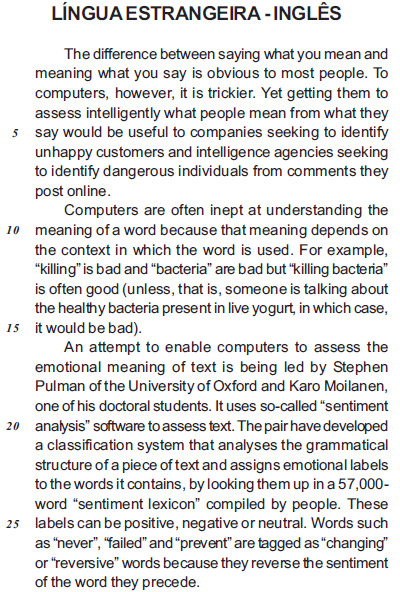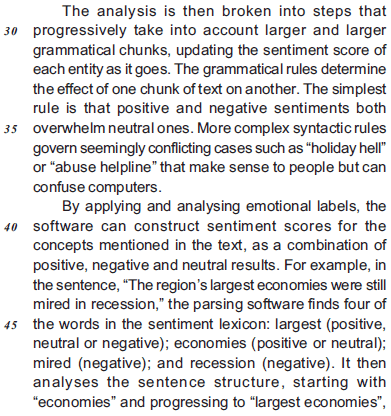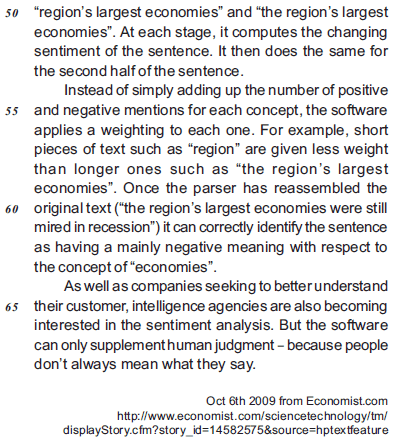


From the fragment "But the software can only supplement human judgement - because people don't always mean what they say." (lines 66-68), we may infer that the author
- A. does not believe the software can be totally trusted.
- B. complains that human judgement is never fair enough.
- C. pressuposes that computer sentiment analysis is fully reliable.
- D. rejects human analysis of feelings and supports technological sentiment analysis
- E. criticizes companies that intend to use the new software to analyse potentially dangerous clients.





